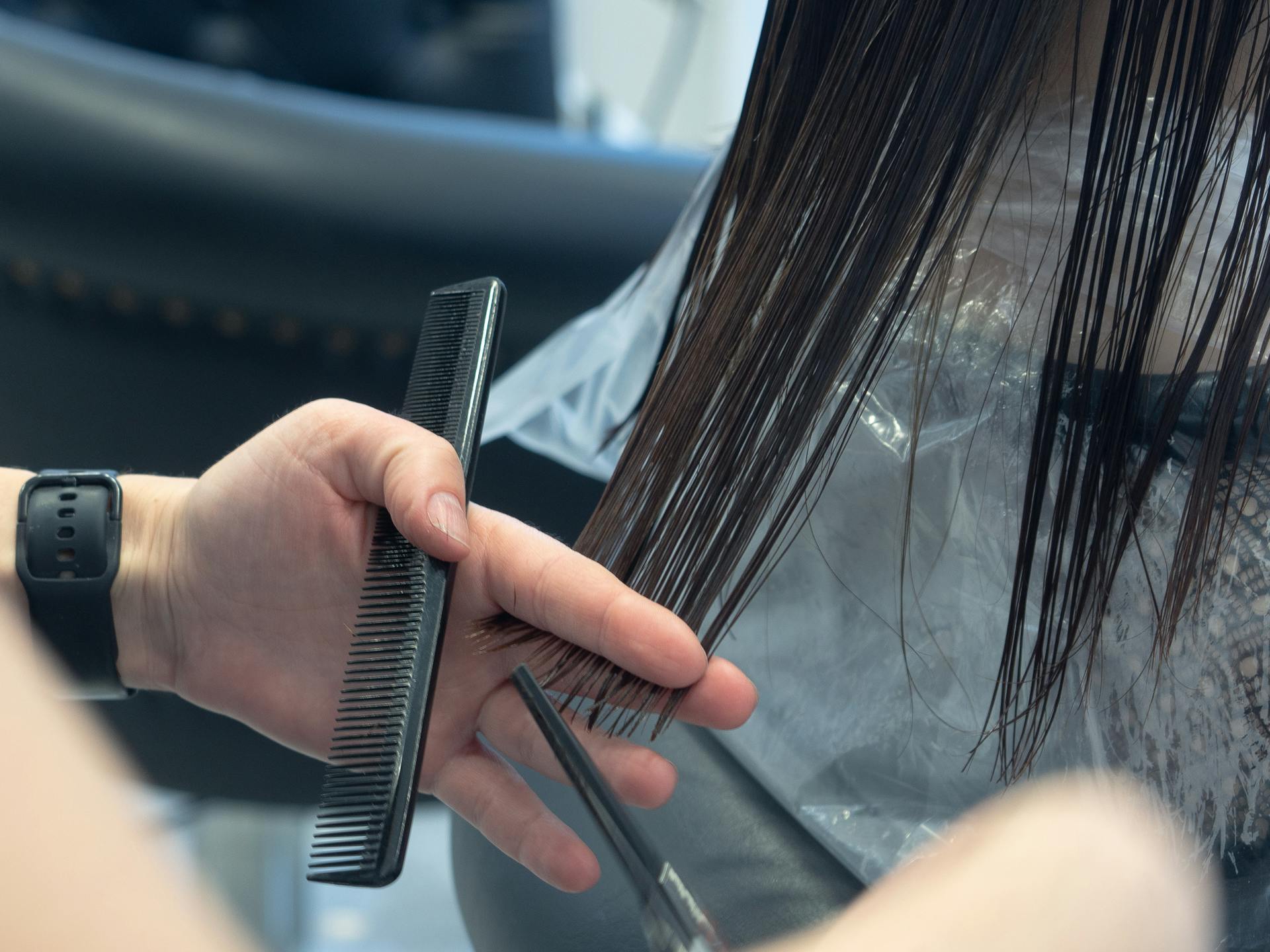
As a pet owner, the well-being of your beloved furry companion is paramount. You probably want to keep them around for many years, right?
One way to achieve this is through preventative care. Proactively staying ahead of health issues can keep your pet healthy and happy year-round. Imagine never having to see your pet suffer from preventable illnesses or injuries!
So, whether you have a feline friend, a canine pal, or other domesticated animals, keep reading. In this blog, you’ll discover complete guidelines for ensuring your pet’s well-being. Relax and start exploring the world of preventative care for pets.
1. Visiting a Veterinary Clinic
Regular vet visits are essential for preventative care. Your vet is your partner in boosting your pet's health and can provide personalized advice. These appointments involve health check-ups for your pet and give you the opportunity to ask questions.
For instance, your vet may spot early signs of diseases or conditions you might not have noticed. Early issue detection enables timely intervention and a higher chance of successful treatment. Remember, prevention is always the best defense.
For pet health advice in Idaho, consider visiting Sunnyside Veterinary Clinic or another reputable clinic. If you can’t make it in person due to time or location constraints, you can watch video tours online. Click here or explore other resources to get a glimpse of what to expect during your visit.
2. Keep Up-to-Date with Vaccinations
Vaccines are essential in preventing infectious diseases in pets by boosting their immunity and reducing the risk of common illnesses. Consulting with your vet is vital for creating a vaccination schedule that suits your pet's lifestyle and specific needs.
For instance, puppies and kittens require a series of vaccinations to build immunity. As they grow into adult pets, regular booster shots will help maintain their protection. By staying up-to-date with vaccinations, you can protect your pet and prevent the spreading of contagious diseases.
Take a look at this: Common Diseases in Cocker Spaniels
3. Discuss Spaying or Neutering
Spaying or neutering your pet plays a role in their long-term health. Here’s a list of the benefits of these:
- Preventing Reproductive Disorders Spaying or neutering your pet can help avert uterine infections, testicular cancer, and prostate issues. These conditions can be severe and even life-threatening if left untreated.
- Reducing the Risk of Certain Cancers Breast, uterine, and ovarian cancers are significantly reduced by spaying a female pet before her first heat. Likewise, neutering a male pet lowers the risk of testicular cancer and prostate gland issues.
- Managing Behavioral Issues Spaying or neutering can help reduce behavioral issues like aggression, roaming, and marking territory with urine. It can also decrease the likelihood of mating instinct-related behaviors.
- Longer Lifespan Studies reveal that spayed or neutered pets live 39% to 62% longer than unaltered ones. Their risk of pyometra and prostatic hyperplasia is lower. They’re also less likely to get hurt in mating-related fights or roaming accidents.
Remember to consult your vet before spaying or neutering your pet. They can advise on the best timing for the procedure based on your pet’s breed, size, and health.
Worth a look: Canine Cancer Awareness Month
4. Balanced Diet and Hydration
A well-balanced diet and ample hydration are vital to keeping your pet healthy. Here’s a list of suggestions to ensure your pet’s nutritional needs are met:
- Consult Your Veterinarian Your vet can recommend the appropriate type and amount of food for your pet based on age, breed, size, and health concerns.
- Choose High-Quality Pet Food Look for natural pet food that meets nutritional needs. Avoid filler and artificial food additives.
- Follow Portion Control Portion control is essential for pet obesity prevention and weight management. Follow the pet food manufacturer’s feeding guidelines or ask your vet.
- Provide a Variety of Nutrients Your pet’s diet should include protein, carbohydrates, healthy fats, vitamins, and minerals. This can be done by combining commercial pet food and fresh, unprocessed species-appropriate foods.
- Control Treat Overconsumption While treats can be a fun way to reward your pet, excessive consumption can lead to weight gain and nutritional imbalances. So, keep treats to a minimum and choose low-calorie treats or fruits and vegetables.
- Avoid Feeding Table Scraps Table scraps or leftover food may contain fat, salt, or other harmful ingredients to pets. To ensure your pet gets proper nutrients, stick to feeding them a balanced diet.
- Always Provide Fresh Water Fresh, readily available water encourages pets to drink more water. Ensure your pet always has constant access to clean and fresh water throughout the day. Also, monitor their water intake to avoid dehydration in hot weather or after exercise.
Following this advice can help your cat sustain a healthy weight, lowering the chances of health issues related to obesity.
Explore further: Mini Pinscher Food to Avoid
5. Consider Dental Cleanings and Oral Examinations
Maintaining proper oral health isn’t only necessary for humans but also for animals. Poor dental hygiene can cause dental diseases that harm your pet.
That’s why regular dental cleanings and exams are essential for preventative care. During these sessions, your vet can identify any signs of dental disease, such as:
- Tooth Decay Just like humans, pets can develop cavities and tooth decay, too. Timely detection and treatment can halt tooth loss from occurring.
- Gingivitis Gingivitis refers to gum inflammation, often caused by bacteria and plaque. Regular oral exams can help address gingivitis before it causes severe periodontal disease.
- Bad Breath Chronic bad breath may indicate dental issues. Regular dental cleanings can improve your pet’s oral hygiene and breath.
By bringing your cat to the vet for an oral exam, you can address the issue early on and prevent complications.
Suggestion: Do Dachshunds Have Bad Teeth
6. Dental Hygiene
Apart from regular dental cleanings, dental hygiene is essential for a pet’s oral health. Here are tips to incorporate this into your pet’s routine:
- Brushing their Teeth Pets can also benefit from regular tooth brushing. Your vet may recommend pet-specific toothbrushes and toothpaste. To acclimate your pet, start introducing the toothbrush and toothpaste gradually. Make it a goal to brush their teeth daily to eliminate plaque and avoid tartar buildup.
- Dental Treats and Toys Dental treats and toys help maintain your pet’s oral hygiene by cleaning their teeth while they chew or play. These products promote oral hygiene by reducing plaque and tartar accumulation. Take note to opt for ones with the Veterinary Oral Health Council (VOHC) seal of approval, indicating they meet effectiveness standards.
Keep in mind that while these measures can help maintain your pet’s dental health, they shouldn’t replace vet-performed dental cleanings. Anesthetic dental cleanings allow for a thorough exam, deep cleaning, and treatment of dental issues.
If this caught your attention, see: Dental Health Diets for Dogs
7. Regular Exercise and Mental Stimulation
Your pet’s health significantly relies on the combination of physical exercise and mental stimulation. Regular exercise improves cardiovascular health, weight management, and muscle and joint strength. Meanwhile, interactive play, puzzle toys, and training prevent boredom or destructive pet behavior.
Here are a few elements to keep your furry friend active:
- Daily Walks Regular walks give your pet exercise and mental stimulation. Explore different routes and let them sniff and roam.
- Interactive Toys Puzzle and treat-dispensing toys engage your pet’s mind. These toys require problem-solving skills and can keep your pet entertained for hours.
- Playtime Set aside dedicated playtime with your pet. Interactive games like fetch, hide-and-seek, and tug-of-war strengthen your bond and keep your pet active. You can also hide treats around the house or set up a backyard agility course for your pet to stimulate your fur buddy's mind.
Remember, the level of exercise and mental stimulation needs depends on age, breed, and health. Consult with your vet to assess the appropriate amount and type of activities for your pet.
See what others are reading: How Much Exercise Does a Cavapoo Need
8. Grooming and Skin Care
Regular grooming is crucial for your pet’s well-being. Consider these grooming and skin care factors:
- Brushing Regular brushing prevents matting and shedding and maintains your pet’s coat. Brushing frequency depends on your pet’s breed and coat type.
- Bathing While bathing is necessary to keep your pet clean, it’s essential not to overdo it. It’s recommended to bathe dogs every 4 to 6 weeks or whenever they smell or look greasy. And as for cats, bathing is usually unnecessary, as they’re adept self-groomers. However, a bath may be needed if your cat gets into something sticky or dirty.
- Nail Trimming Nail overgrowth can cause discomfort and illness, so take time to trim your pet's nails.
- Ear Cleaning Regularly inspect your pet’s ears for infection or dirt. Safely clean the outer ears with a vet-approved cleaner, avoiding insertion into the ear canal.
- Skin Care Monitor your pet’s skin for signs of irritation, dryness, or parasites. If you observe any alterations in your pet’s skin condition, consult your vet for a proper diagnosis.
With these grooming habits, you can help maintain your fur baby’s hygiene. However, if you lack the confidence to groom and care for your pet, it’s advisable to seek the help of a professional groomer. They have the expertise in handling different grooming tasks safely and effectively.
See what others are reading: Bichon Frise Skin Problems
9. Preventing Parasites
Preventative care requires removing fleas, ticks, heartworms, and intestinal worms. These parasites can have severe health implications for your pet.
Your veterinarian can advise preventatives based on your pet’s lifestyle and the prevalence of local parasites. They may also recommend monthly topical or oral preventatives to ensure your pet remains protected.
Related reading: How to Prevent Parasites in Dogs
10. Providing a Safe Environment
Creating a safe space for your pet prevents accidents and injuries. Safeguard your pet with these tips:
- Get Rid of Toxic Plants Remove plants like lilies, azaleas, and tulips can be toxic to pets if ingested. Instead, opt for pet-friendly plants, such as calatheas, gloxinia, Boston fern, Chinese money plant, and African violet.
- Eliminate Small Objects Pets are naturally curious and can swallow small objects that can cause choking or blockages. Keep small objects like buttons and small toys out of your pet’s reach. Be mindful of items, such as rubber bands, strings, or yarn, as they can be harmful.
- Tidy Up Electrical Cords Pets may chew on dangling electrical cords, causing electrocution and burns. Organize or contain these cords so they aren’t easily accessible to your pet. Consider using cord protectors or hiding cords behind furniture.
- Provide Proper Supervision Supervise your pet as they meet other animals for the first time to lower the risk of injuries and fights. Aside from that, ensure your yard is securely fenced to prevent escape. Constantly keep an eye on them to prevent exposure to dangerous animals or substances.
- Keep Medications Secure Human medications like benzodiazepines or antihistamines can be toxic to pets. Some of which can cause elevated heart rate, aggression, and seizures. Thus, it's advisable to keep prescription and over-the-counter medications in a secure container.
- Choose Safe Toys and Chews Only provide your pet with toys and chews that are safe and appropriate for their size and breed. Avoid toys with small, easily swallowed or chewed parts.
- Minimize Exposure to Dangerous Substances Keep pesticides and other chemicals stored in secure cabinets. Always read labels and ensure that products are appropriate for pets.
- Use Pet-Friendly Products Pet-friendly cleaners and air fresheners should be chosen for your home. Some products contain pet-harming ingredients like ammonia, bleach, or formaldehyde.
Remember, even with all precautions in place, accidents can still happen. Keeping a pet first-aid kit and knowing the nearest emergency veterinary clinic is essential.
A fresh viewpoint: Keeping Your Pet Safe and Happy on the Road
11. Emotional Well-Being
Your pet’s emotional well-being is just as crucial as their physical health. Spending quality time with your pets and providing a stress-free environment are vital for their happiness.
Also, be mindful of any signs of anxiety or other emotional issues that your pet may be displaying. Discuss any concerning behaviors with your vet so they can provide appropriate support.
For instance, a cat that isolates and avoids social interaction may be showing a sign of depression or stress. Remember, a strong bond requires understanding and meeting your pet’s emotional needs.
12. Training and Socialization
Lastly, pet training and socialization are crucial to preventative care. Consider these suggestions:
- Start Early Start training your pet as soon as you bring them home. Initiating socialization and obedience training early on will ensure your pet is well-behaved and confident.
- Positive Reinforcement Treat and praise your pet for good behavior to help them associate commands with positive experiences.
- Basic Commands Train your pet basic commands like sit, stay, and come to promote safety in different situations.
- Exposure to Different Environments Travel with your pet and expose them to diverse sights, sounds, and smells. This way, you can help them adjust and reduce anxiety or fear in unfamiliar situations.
- Socialize with Other Animals Arrange playdates with friendly animals to help your pet learn how to behave around other pets. Doing so will help prevent aggression or fearfulness towards other animals.
- Positive Interactions with Humans Introduce your pet to different people of all ages and backgrounds. Reward your pet for calm, friendly behavior around new people.
- Consider Professional Obedience Training If you’re having difficulties with training or socialization, consider hiring a dog trainer or animal behaviorist. They can advise and tailor a training plan for your pet’s specific needs.
By including training and socialization into your pet’s routine, you’re ensuring their adaptability and joy.
Key Takeaways for Proactive Pet Care
Overall, preventative care is vital to keeping your pet healthy year-round. Following these tips can give your furry friend the best opportunity for a long life.
Remember, your vet is your go-to for personalized advice and guidance. So, schedule regular check-ups and address concerns for a well-rounded preventative care plan for your pet. May your fur baby live a healthy, blissful life!
Recommended read: Giant Schnauzer Life Expectancy
Featured Images: pexels.com


